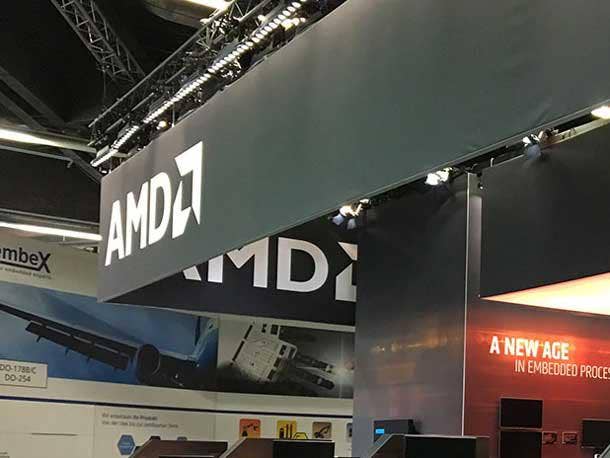AMD: ‘Strong’ Enterprise Growth Led By Data Center, Laptop Sales
AMD CEO Lisa Su says the data center business grew to account for roughly 25 percent of total revenue in the third quarter. That growth was largely boosted by AMD’s third-generation EPYC CPUs, which exceeded sales of the company’s previous generation of server processors for the first time.

AMD CEO Lisa Su said the chipmaker is seeing “strong” traction with enterprises that is being driven by “significant” growth for commercial laptop chips and a more than doubling of its data center business.
The Santa Clara, Calif.-based company said on Tuesday that this contributed to a record revenue of $4.3 billion for its third quarter, marking a 54 percent year-over-year increase, despite continuing supply challenges that is being felt by the semiconductor industry at large. That, along with a growth forecast of 39 percent for the fourth quarter, prompted AMD to increase its full-year revenue growth outlook to 65 percent, a major leap from the 37 percent growth it predicted in January.
[Related: Intel Sees Enterprise Sales Bounce Back, Forecasts Pricey Turnaround]
Investors had a mostly muted response as AMD’s stock price was mostly flat in after-hours trading.
In the earnings call, Su said AMD’s data center business grew to account for roughly 25 percent of total revenue in the third quarter. That growth was largely boosted by AMD’s third-generation EPYC CPUs, which exceeded sales of the company’s previous generation of server processors for the first time after launching earlier this year. Also contributing were new CDNA 2 GPUs that will be detailed in an event next month.
Su said AMD’s EPYC momentum allowed the company to achieve a sixth straight quarter of record server CPU revenue, which was lifted up by sales to hyperscale, supercomputing and enterprise customers.
“We expanded our wins in the quarter with Fortune 1000 financial services, automotive and aerospace companies and see significant ongoing growth opportunities as our enterprise server pipeline has more than doubled year over year,” she said.
Su said she believes AMD’s third-generation EPYC CPUs are “extremely well positioned” to continue competing against Intel and other rivals and that she feels “very good” about next generation of server processors due out next year. Intel CEO Pat Gelsinger previously told CRN that he believes AMD’s lead in servers will be “over” with the next generation of Xeon Scalable CPUs that come out in 2022.
“We feel very good about the competitive positioning there,” Su said. “And we continue to believe that data center is the most strategic part of our business, and we’re making good progress with our customers and partners.”
Su said AMD’s data center GPUs remains a “relatively small business compared to the CPU side” but added that it will be a “significant, strategic growth driver” for the company over the next few years. That will be driven in large part by AMD’s deployment of CDNA 2 GPUs alongside next-generation EPYC CPUs for the U.S. Department of Energy’s Frontier exascale supercomputer that is on track for this year.
“Frontier was architected specifically to deliver breakthrough HPC and AI compute performance and provide a blueprint for how supercomputing, enterprise and cloud customers can enable exascale-level performance over the coming years by combining AMD CPUs, GPUs and software,” she said.
AMD remains on track to complete its $35 billion acquisition of FPGA maker Xilinx this year, Su said, and she believes there are ways Xilinx’s software expertise will improve AMD’s overall data center portfolio.
“I think the Xilinx acquisition and bringing in that software talent also provides opportunities to optimize across the overall portfolio in terms of just the software infrastructure that people want in an overall ecosystem,” she said.
As for the client CPU business, AMD said it saw “significant” year-over-year growth in the quarter for chips powering commercial notebooks bought by large enterprise customers.
“Commercial client growth year-over-year was based on new deployments across public sector and Fortune 1000 technology, energy and automotive customers as the number of AMD-based commercial notebook designs available from the largest OEMs increased significantly year-over-year,” Su said.
AMD’s Computing and Graphics segment, which includes client CPUs and GPUs as well as data center GPUs, grew 44 percent year-over-year to $2.4 billion in the third quarter. Meanwhile, the Enterprise, Embedded and Semi-Custom segment, which includes data center CPUs and custom chips for video games consoles, grew 69 percent year-over-year to $1.9 billion.
Su said AMD has performed exceptionally despite the ongoing global chip shortage.
“Our supply chain team has executed extremely well in a challenging environment, delivering incremental supply throughout the year, supporting our strong revenue growth,” she said. “We’re also investing significantly to secure additional capacity to support our long-term growth.”